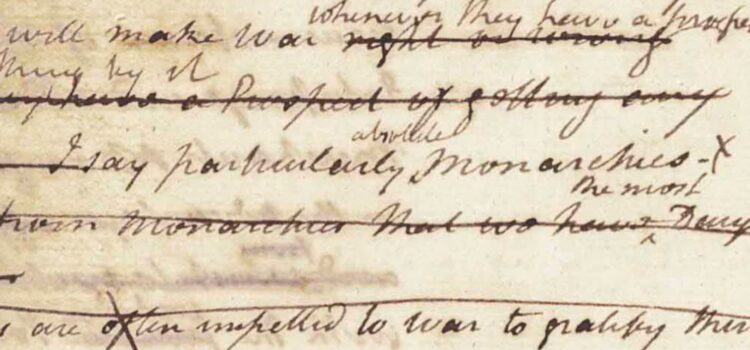

This article is an excerpt from the Shortform book guide to "Alexander Hamilton" by Ron Chernow. Shortform has the world's best summaries and analyses of books you should be reading.
Like this article? Sign up for a free trial here.
What are the contents of Alexander Hamilton’s Federalist Papers? Why did he write the Federalist Papers?
The Federalist Papers are known as Hamilton’s best-known piece of work. They consist of 85 essays that describe, in detail, what each clause of the Constitution states so that it wouldn’t be misinterpreted.
Let’s look at why Hamilton wrote the Federalist Papers and the impact they had on America at the time.
Ratification and The Federalist Papers
After months of secretive meetings, the delegates of the Constitutional Convention submitted the new Constitution to the states for ratification. This one act would later lead to Alexander Hamilton’s Federalist Papers, which will be discussed below.
The Constitution carefully distinguished between powers exclusive to the federal government, such as the ability to regulate trade, and those shared with the states, such as the ability to impose taxes. It also divided the central government into three branches and described the qualifications and term limits for the members of each branch—the President in the executive branch, Congressmen in the legislative branch, and Justices in the judicial branch.
(Shortform note: Aside from the powers expressly given to the federal government, state governments, or both, the Tenth Amendment to the Constitution also declares that any power not explicitly granted to the federal government or explicitly forbidden to the states will belong to the states by default. In practice, sorting out when and how states can claim these powers has proven complicated. For example, one Supreme Court case decided that the federal government did not have the right to ban firearms from schools because public education falls under the states’ purview, while another decided that the federal government did have the right to ban cannabis because of the plant’s role in interstate commerce.)
According to Ron Chernow’s biography Alexander Hamilton, the majority of the delegates to the Constitutional Convention shared Hamilton’s vision of a strong central government, though fights were waged over specifics like the balance of power and term limits. The response of the general public to the Constitution, however, was outrage, as this was such a radical break with the Articles’ description of a loose confederacy. The ratification process required nine states to accept the Constitution before it would be adopted, and in the end this process stretched for over a year.
(Shortform note: Rhode Island was the last state to ratify the Constitution, holding out until 1790. It was also the only state not to send any representatives to the 1787 Constitutional Convention. “Rogue Island,” as it was dubbed by critics, was one of the strongest voices in favor of state sovereignty, and it particularly wanted the ability to veto federal taxes and print its own paper money. Ratification came only after the US government threatened to tax Rhode Island’s imports and exports as if it were a foreign country, and the state attached over a dozen proposed amendments to their vote, including a ban on poll taxes and the slave trade. None were adopted.)
Hamilton began the project of writing The Federalist Papers out of his belief that the Constitution—which, Chernow argues, was so brief that it was open to a number of interpretations—needed to be thoroughly explained and defended to state voters. In 85 essays written with Madison and New York politician John Jay, Hamilton discussed each clause of the Constitution and its applications, emphasizing the limits of federal versus state powers and the spirit of compromise that had gone into writing it. The majority of the essays were written by Hamilton, and Chernow describes it as Hamilton’s best-known and most influential work, still cited in Supreme Court interpretations of constitutionality.
(Shortform note: Historians have debated how much The Federalist Papers really impacted ratification, since it wasn’t widely read outside of New York and the state only voted to ratify by a slim margin, 30-27. However, the essays have since been cited in hundreds of Supreme Court cases as a resource in interpreting the Constitution, particularly when it comes to defining the limits of federal versus state powers.)

———End of Preview———
Like what you just read? Read the rest of the world's best book summary and analysis of Ron Chernow's "Alexander Hamilton" at Shortform.
Here's what you'll find in our full Alexander Hamilton summary:
- The biography of Alexander Hamilton that was adapted into the Broadway musical
- The life and influence of the overlooked Founding Father
- How Hamilton's life ended in scandal and a fatal duel






